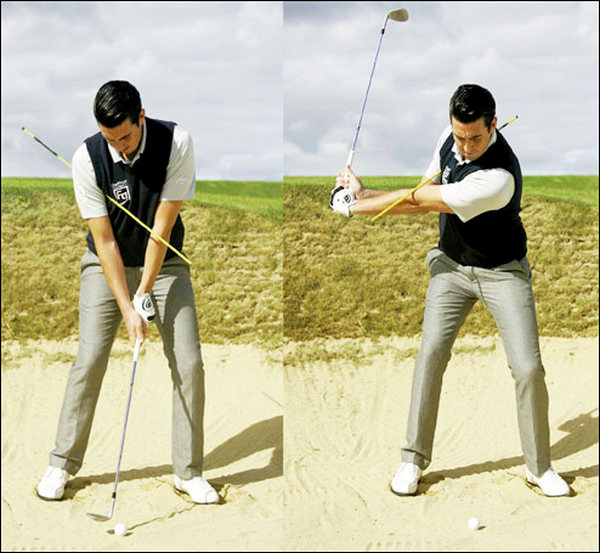The first steps towards becoming a good bunker player involve taking on board a handful of proven fundamentals that encourage good technique and then investing time and effort in the sand to develop the confidence to play different shots. Let me share some of the best lessons I have experienced as a coach – along with a couple of drills that get results
By Dan Frost
Set up Rule No. 1: Lower your centre of gravity
One of the key adjustments to the set-up position that the majority of amateurs fail to grasp is that you need to lower your centre of gravity in order to promote good technique. Typically, the club golfer adopts too narrow a stance and leans his weight away from the target (believing this will assist in lifting the ball out). Wrong. To play a regular sand shot you need to increase the width of your stance to create a firm foundation, and at the same time lower your centre of gravity as you flex your knees and gently ease your weight onto your left side.
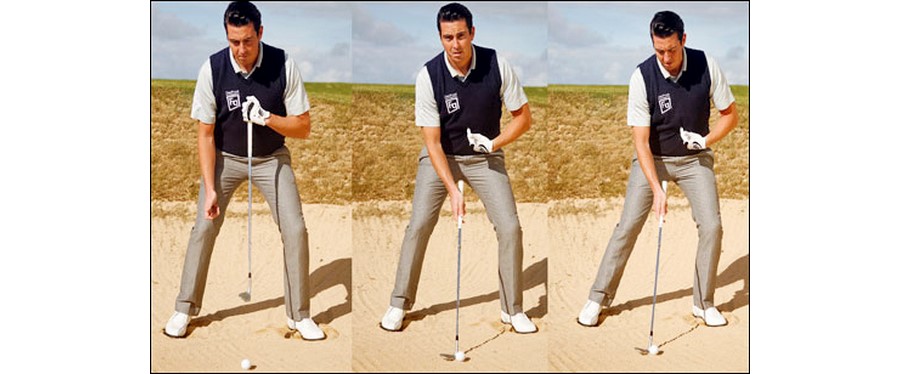
(Centre) Bend from the hips to create a distinct spine angle, and check that the butt end of the club points at your stomach
(Right) Ease your weight towards the target – a 40-60 split in favour of the left side
To appreciate this sensation, hold a club in the middle of your chest, widening your stance and sinking down into the bunker. Get a sense that your weight favours your left side, 40-60. This will help you to create a slightly steeper shoulder turn and pivot point, allowing you to be nice and shallow with your arm plane (your arm swing).
With your feet nicely grounded, you are now in a great position to activate the wrists and forearms and produce the fluent swing that accelerates the clubface through the sand beneath the ball. This sense of having a low centre will really allow you to slide the club through the sand rather than pick it off the top.
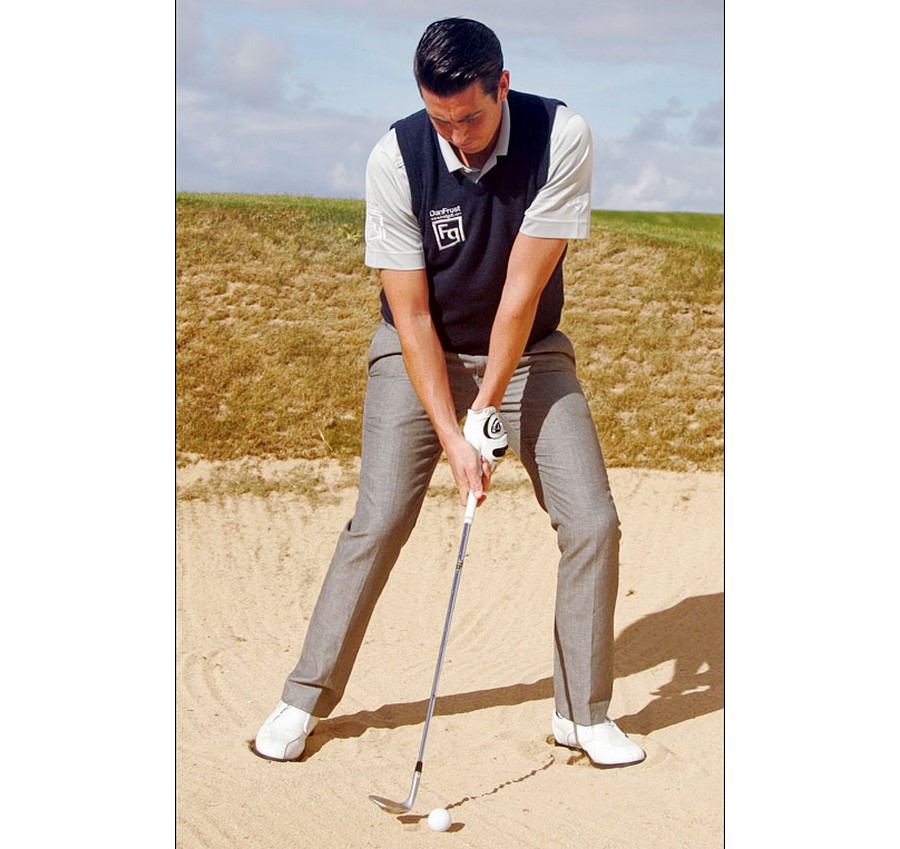
Release tension, and experience the feeling of thumping the sand
Golfers who enter the sand fearful of the outcome consequently set-up with a lot of tension at address. And that’s a sure fire way to guarantee a poor result. If you struggle with excessive tension, go out and see what you can do with this simple one-arm exercise – a routine I can remember watching Nick Faldo use when I was a kid. He made splashing the sand look effortless – and in just a few minutes’ you can enjoy the same sensation of free-flowing technique that skims the clubface through the sand.
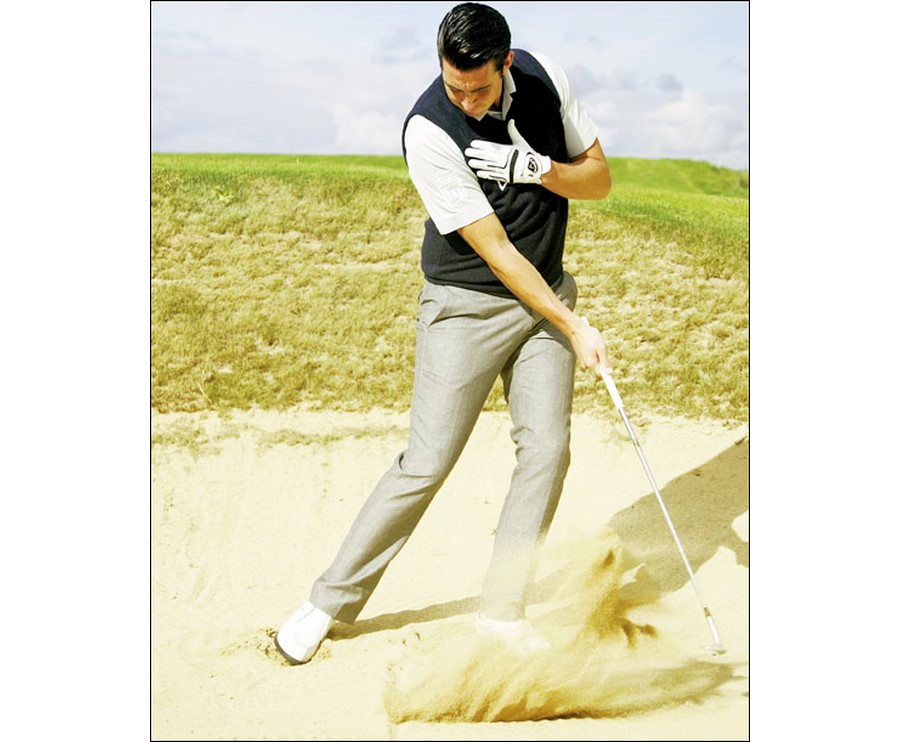
Having released the clubhead thorugh the sand, be sure to rehinge the shaft as you swing it through
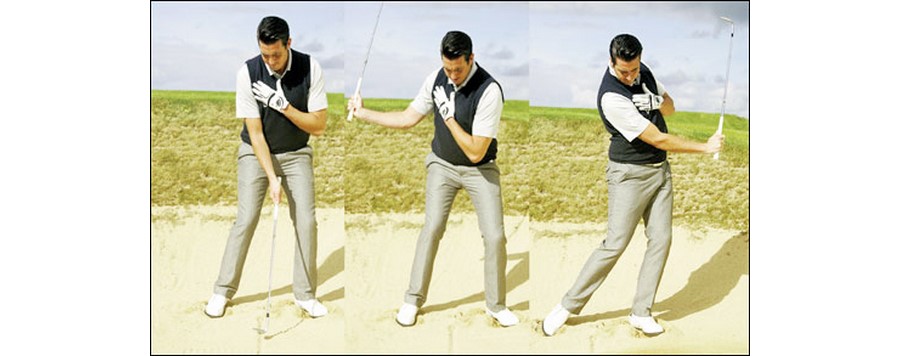
Score a line in the sand to give you a point of focus (your entry point), grip the club lightly with your right hand, and see how accurately you can thump that line. This will quickly wake up your senses to the delicate hold (soft grip pressure) required for your wrist to work effectively. Simply turn the chest, strike the shot and let the club rehinge on the way through. That is key here. If you can develop the skill to create this wrist action, back and through, and combine it with a good body action, you will consistently strike that centre line in the sand. The more you rehearse this, the better will be your feel and control for taking a shallow divot of sand when you then place a row of balls on that line and splash them all out.
How to ignite your technique, and enjoy controlled acceleration through impact
I once heard Gary Player use a great analogy to describe the importance of accelerating the clubhead through the sand. He said that the club should travel through the sand like a match striking a box.
To me, that conjures the perfect visual of the speed you are looking to generate; it doesn’t matter what length or what height bunker shot you have to play, the one key to your technique that should remain a constant is that the club should accelerate through the sand. It is this acceleration that guarantees the ball will splash out of the bunker every time.
Poor bunker players are usually guilty of taking too long a backswing and decelerating the clubhead through impact. So here’s a drill that will help you to overcome that tendency and ignite your bunker technique with a real sense of flash speed through the sand beneath the ball. It works like this:
(1) Place a cane high under your right arm so that, as you set up to the shot, it angles across your body and rests on top of your left forearm
(2) With your grip pressure light/relaxed, turn your shoulders and hinge your wrists until the top of your left forearm touches the cane – that is as far as you need to take the backswing
(3) Keeping your eyes focused on a point in the sand, accelerate the club through, rotating your chest to the target and allowing the wrists to release
(4) Having skimmed the clubhead through the sand, it is vital that you allow the club to re-hinge inside the cane on its way to the finish. Developing this technique in the through-swing is the difference between being merely a good or a truly great sand player
When you look at the back – and throughswing positions on the page opposite you can begin to appreciate the symmetry that exists in a good technique. We are looking for a consistent relationship (a mirror image) between the arms and the body on either side of the ball, the wrists hinging and re-hinging fully to give you that wonderful sense of swing and the sensation of clubhead speed where it matters most – at impact.
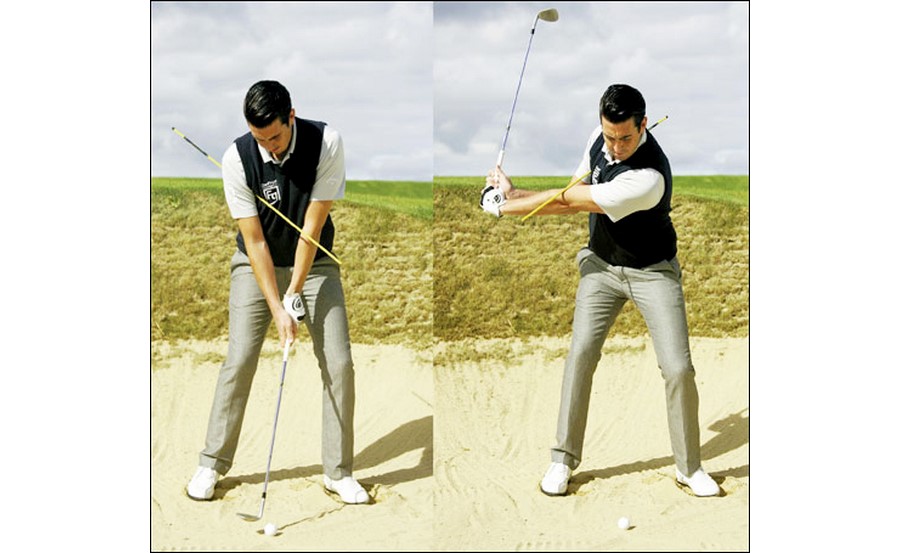
Left forearm rotates under the cane on the way back.
Note the full extent of the wrist hinge
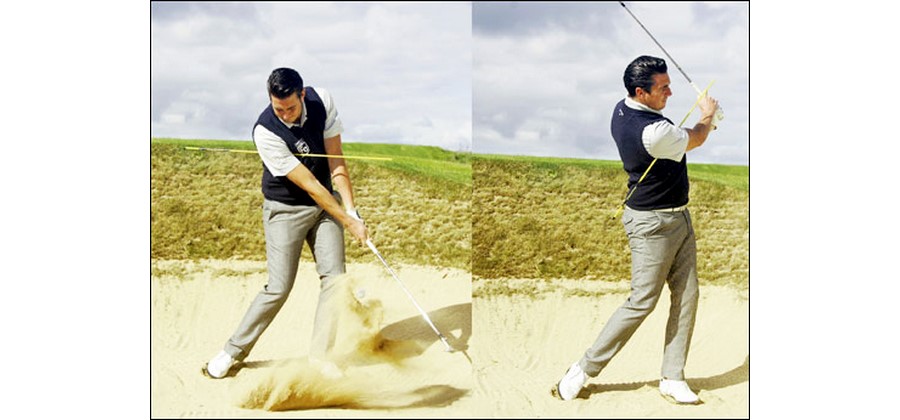
Right arm works under the cane to the finish.
Maintaining that connection with the upper right arm/torso adds to the symmetry of good technique
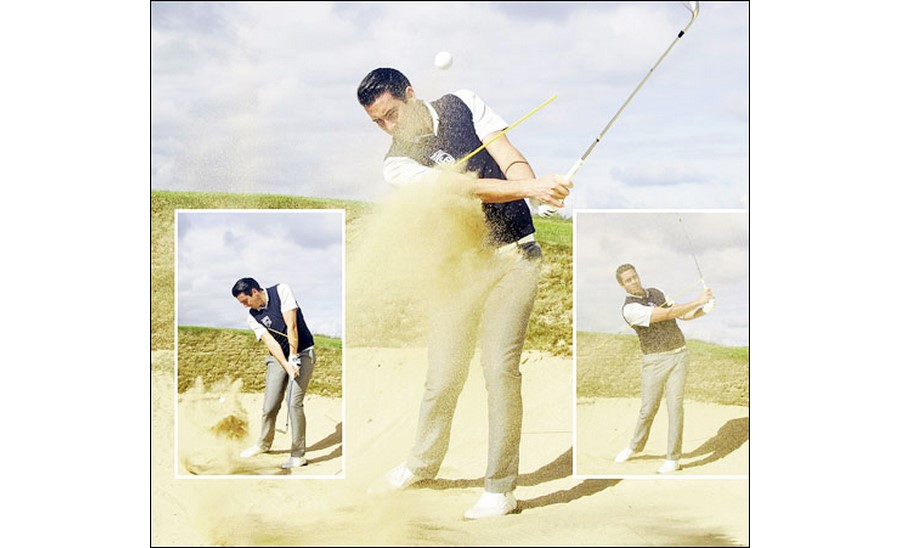
A blend of arms and body – how to simplify your ‘sequencing’ from the sand
All great golfers display great ‘sequencing’ in their golf swing – i.e. the hands, arms and torso move in perfect ‘sync’. The same principle applies to good bunker technique – as I mentioned briefly a moment ago, it is vital that you cultivate the sequencing between the chest and the arms that allows you to produce a shallow sweeping motion through the sand.
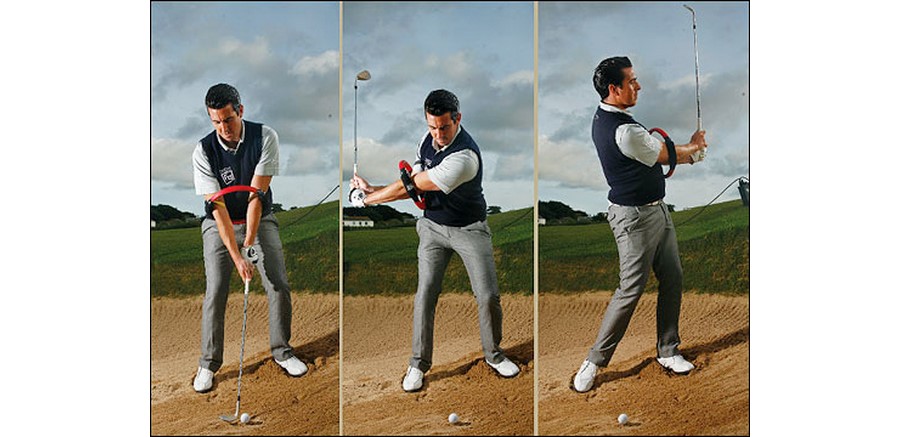
As soon as your arms and chest fall out of sync, the consistency of your swing – and quality/accuracy of strike – suffers. This simple hoop drill is designed to help you regroup. It works like this:
(1) Prior to setup, place your arms through a hoop (you can also use a piece of elasticated theraband) and then get the sensation of the arms and torso rotating together as you make rehearsal swings
(2) Turn your belly button to the right and feel the hoop working around your rib cage in the backswing as your wrists hinge the club up
(3) Turn your belly button to the left of target and feel the hoop working inside your rib cage on the way through Again, note how symmetrical the swing looks as I keep arms and body in tune going back and through. It is this togetherness of swing that enables the club to remove a shallow, consistent cut of sand on every shot.
